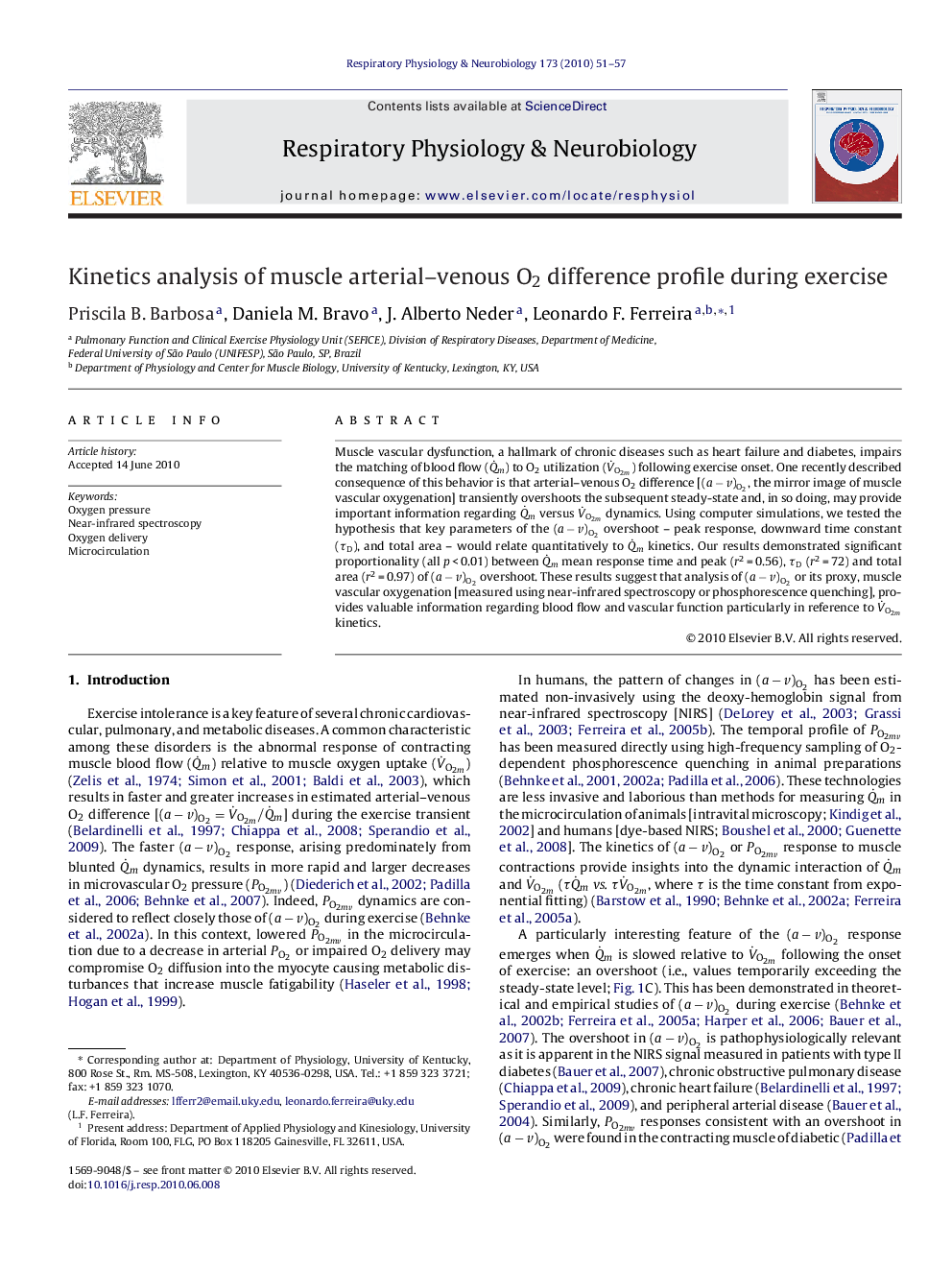| Article ID | Journal | Published Year | Pages | File Type |
|---|---|---|---|---|
| 2847649 | Respiratory Physiology & Neurobiology | 2010 | 7 Pages |
Muscle vascular dysfunction, a hallmark of chronic diseases such as heart failure and diabetes, impairs the matching of blood flow (Q˙m) to O2 utilization (V˙O2m) following exercise onset. One recently described consequence of this behavior is that arterial–venous O2 difference [(a−v)O2(a−v)O2, the mirror image of muscle vascular oxygenation] transiently overshoots the subsequent steady-state and, in so doing, may provide important information regarding Q˙m versus V˙O2m dynamics. Using computer simulations, we tested the hypothesis that key parameters of the (a−v)O2(a−v)O2 overshoot – peak response, downward time constant (τD), and total area – would relate quantitatively to Q˙m kinetics. Our results demonstrated significant proportionality (all p < 0.01) between Q˙m mean response time and peak (r2 = 0.56), τD (r2 = 72) and total area (r2 = 0.97) of (a−v)O2(a−v)O2 overshoot. These results suggest that analysis of (a−v)O2(a−v)O2 or its proxy, muscle vascular oxygenation [measured using near-infrared spectroscopy or phosphorescence quenching], provides valuable information regarding blood flow and vascular function particularly in reference to V˙O2m kinetics.
